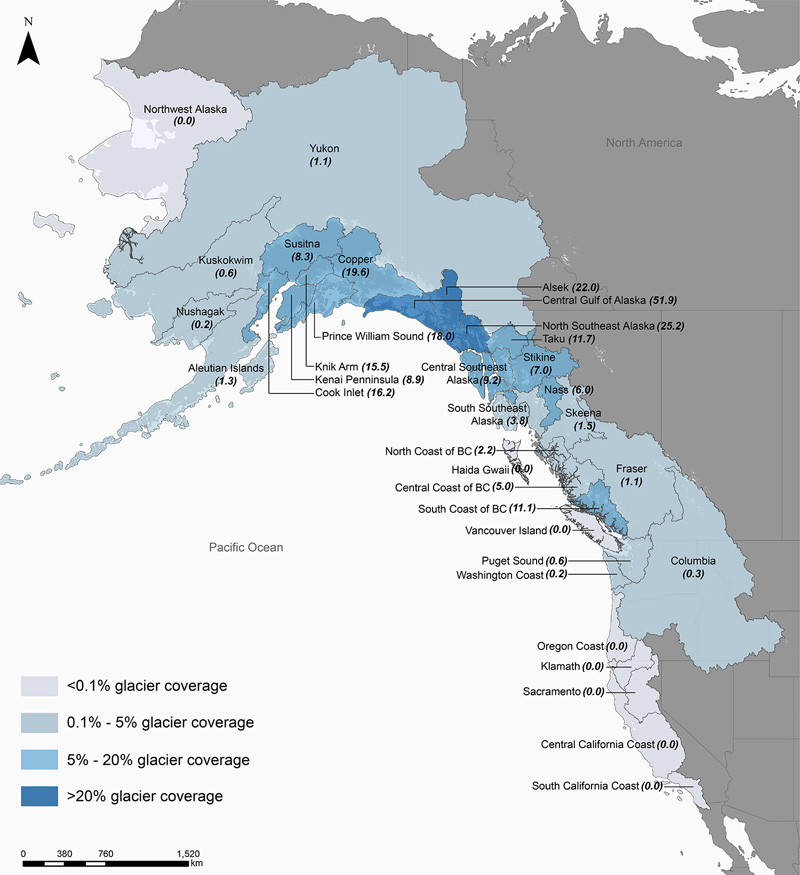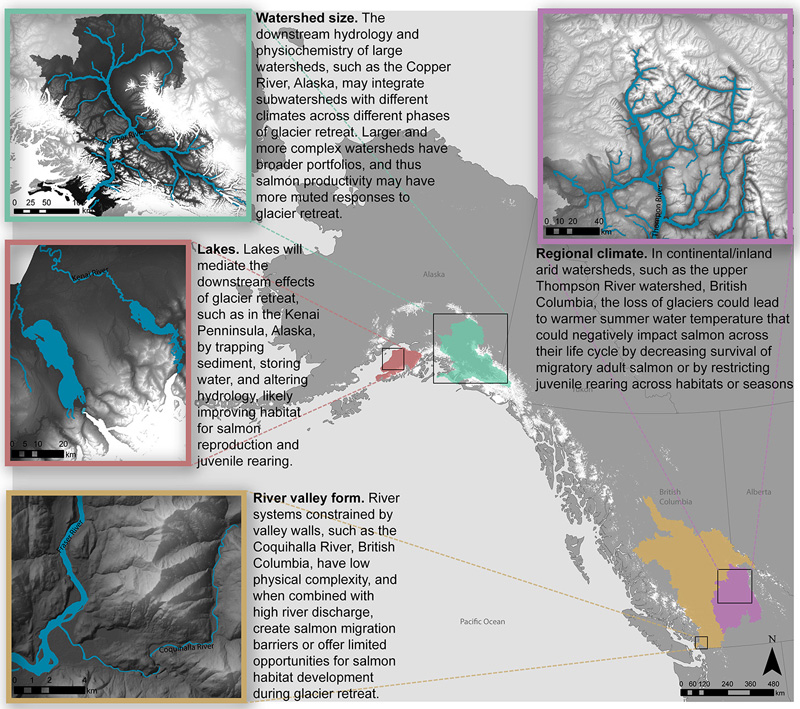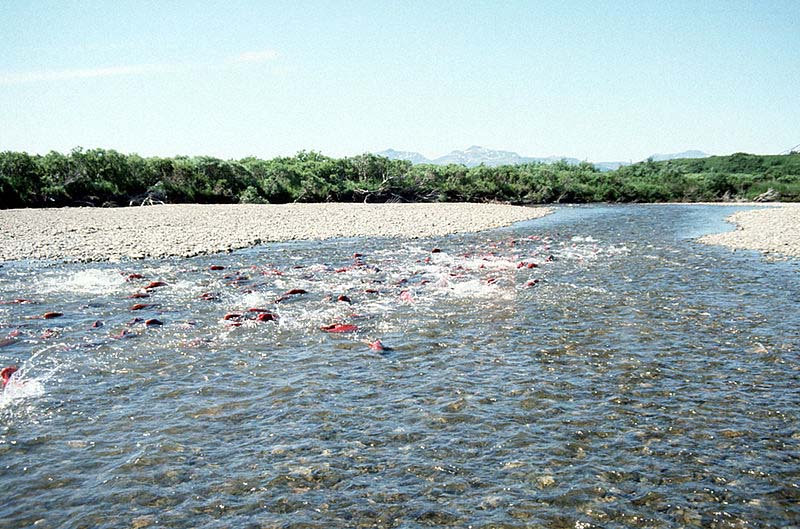
Центр дикого лосося – Wild Salmon Center / Photo courtesy of Igor Shpilenok [WSC].
What glacier melt means for Pacific salmon—including the need to proactively protect emerging salmon habitat
Across the North Pacific, glaciers are melting.
A new study suggests that 85 percent of North America’s salmon watersheds have at least some glacier coverage—and that 80 percent of today’s glacier cover will be lost by 2100. The study, jointly authored by Wild Salmon Center Science Director Matt Sloat and a team of leading Pacific salmon experts, appears today as the cover story in BioScience.
What does that mean for wild salmon conservation? As with all climate change tales, it’s complicated. Adding to climate effects from warming ocean water and extreme temperatures, disappearing glaciers will leave some North Pacific salmon systems more vulnerable to heat and drought.
But, retreating ice will also likely create thousands of miles of potential new salmon habitat
 Map showing the percent glacier cover for watersheds or regions between California and Alaska. The numbers in parentheses following the watershed or region names refer to percent cover of glaciers in the watershed or region. See more graphics from the study.
Map showing the percent glacier cover for watersheds or regions between California and Alaska. The numbers in parentheses following the watershed or region names refer to percent cover of glaciers in the watershed or region. See more graphics from the study.
Map highlighting the mediating factors such as watershed size, presence of lakes, river valley form, and regional climate influencing the effects of glacier retreat on salmon and their habitat. Watershed boundaries (various colors), and rivers and lakes (blue) data were obtained from the National Hydro Database for Alaska and the Freshwater Atlas for British Columbia. Glacier outlines (white), were obtained from the Randolph Glacier Inventory v6.0 (Pfeffer et al. 2014). See more graphics from the study.Featured Image: Spawning Salmon in Becharof Stream within the Becharof Wilderness in southern Alaska [1991] – U.S. Fish and Wildlife Service.


